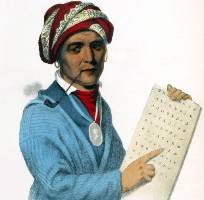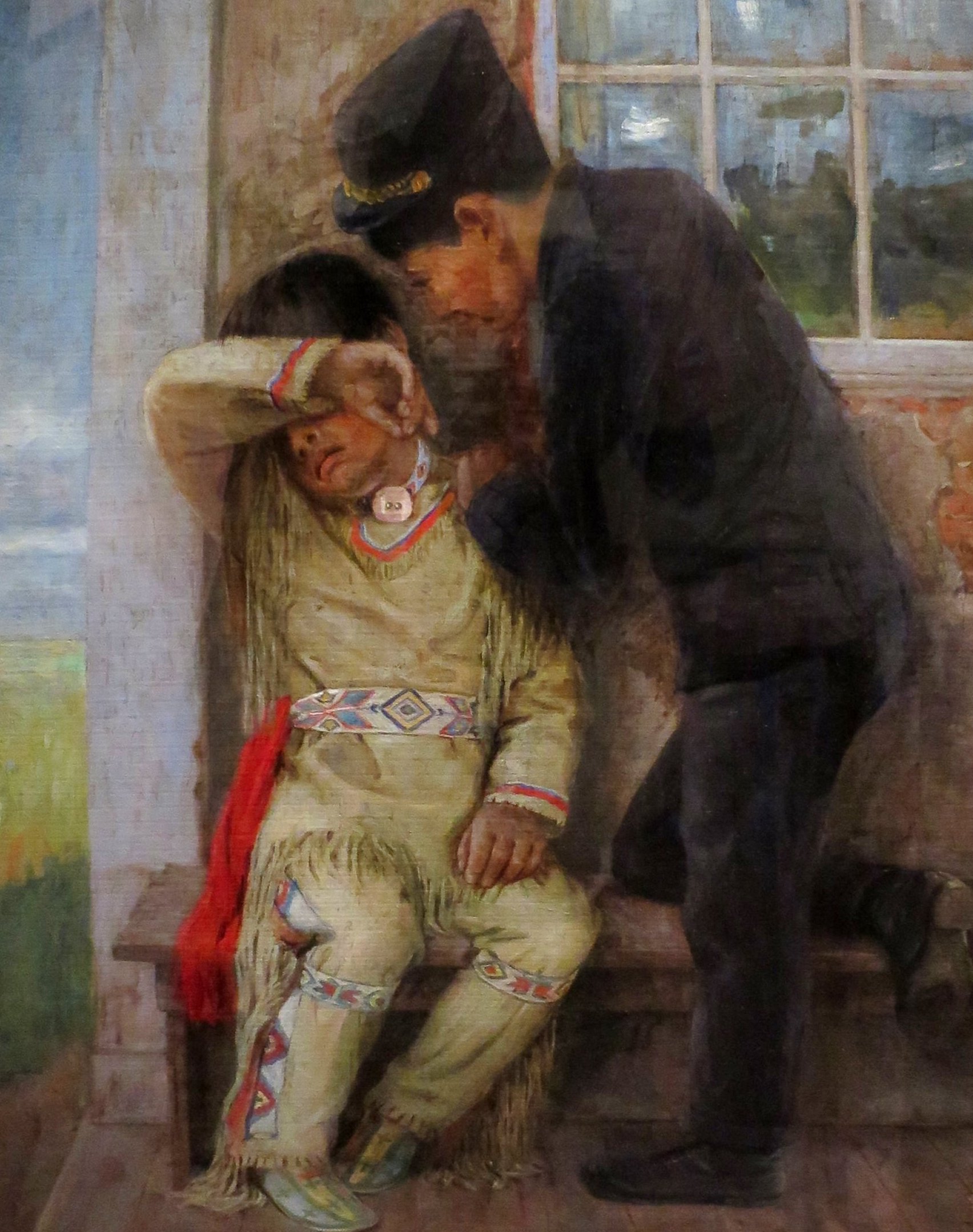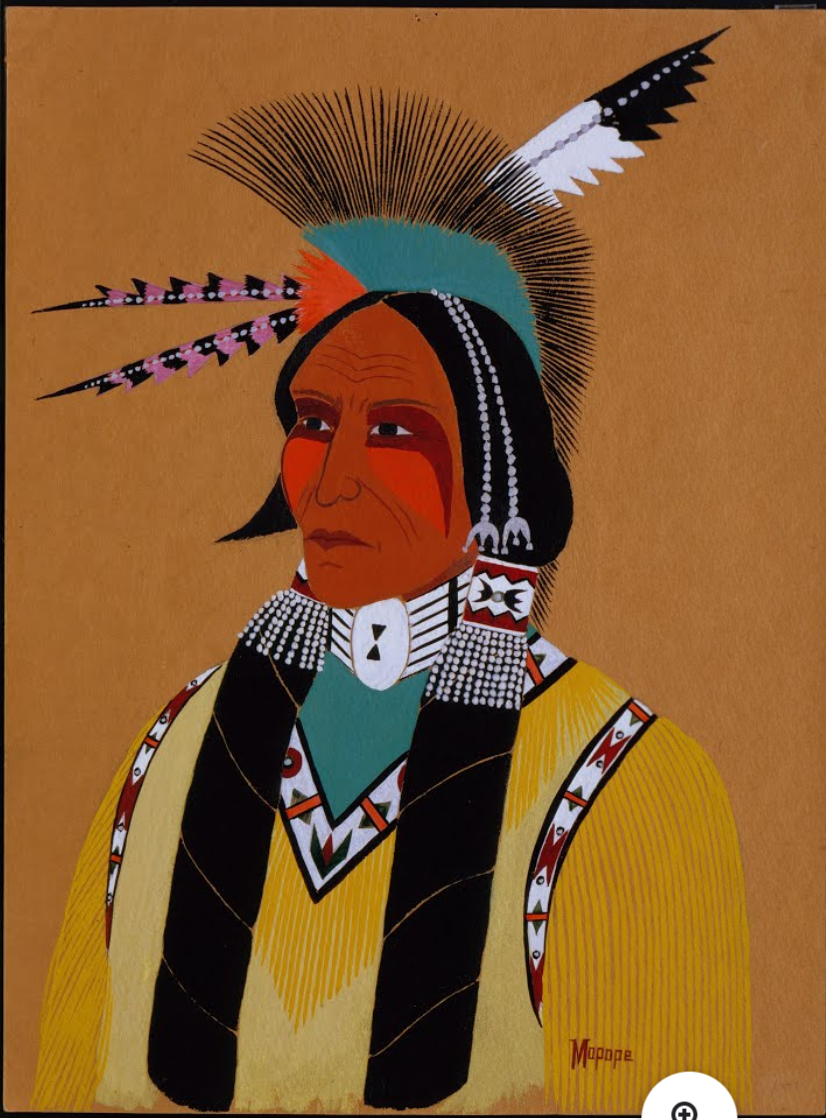Summary
This collection of social studies lessons will provide teachers of Native American Studies with resources, lessons, and activities for students’ exploration of this subject. These lessons will enhance students' knowledge of various historical events and time periods, including pre-contact with Europeans, the Indian Removal Act era, boarding schools, land allotment, the Indian Reorganization Act era, WWI and WWII, termination, relocation, and finally self-determination. The lessons are organized chronologically, beginning before European arrival in North America. If needed, some lessons can be modified to focus only on the Native topics.Resources

This lesson focuses on the accomplishments and culture of the Spiro Mounds builders and their impact on Oklahoma history. Students will take notes as they watch an interview with a Spiro Mounds archaeologist and read about pre-contact cultures before completing a Two-Minute Paper to summarize what they've... Read more »
The Spiro Mounds Builders
Oklahoma History
- Individual Career Academic Plan (ICAP)
- 9th - 12th
- ICAP, Social Studies
- Oklahoma History
- OKH.1.2
Pre-Contact

History courses are filled with people who have "made" history. In this lesson, students will analyze historical figures and make connections about their places in history. Students will research an Oklahoma historical figure of their choice and examine their impact during their historical period, as... Read more »
Analyzing Oklahoma Historical Figures
Analyzing History
- Social Studies
- Oklahoma History
- 9th Grade
- OKH.6.3, OKH.6.4, 5
Removal/Treaties/Indian Wars

This lesson examines the systemic removal of the southeastern United States Native American tribes from their ancestral homes and each tribe's reaction to removal and relocation. Students will gain an understanding of how the policies of the American government about Native Americans changed over time,... Read more »
Many Trails of Tears
The Era of Indian Removal
- Social Studies
- Oklahoma History
- 9th - 10th
- OKH.2.3
Removal/Treaties/Indian Wars

This lesson explores the impact of the Civil War and Reconstruction on the Five Tribes. Students will begin this lesson with a Word Splash activity to activate their prior knowledge about the Five Tribes' involvement in the Civil War. Next, students will explore the Reconstruction Treaties of 1866 (treaties... Read more »
Reconstruction Treaties of 1866
The Reconstruction In Indian Territory
- Social Studies
- Oklahoma History
- 9th Grade
- OKH.3, OKH.3.1, OKH.3.1A, OKH.3.1B, OKH.3.1D, OKH.3.1E, OKH.3.1F
Removal/Treaties/Indian Wars

In this lesson, students will begin by analyzing two images depicting the conflict at the Washita River to generate hypotheses about what happened during this historical event. Next, students will read and analyze an article and complete a corresponding history frame graphic organizer. As an extension,... Read more »
The Conflict at the Washita River
The Indian Wars in Indian Territory
- Social Studies
- Oklahoma History
- 9th Grade
- OKH.3, OKH.3.1, OKH.3.1C, OKH.3.3, OKH.3.4, OKH.3.5
Removal/Treaties/Indian Wars

Students will analyze the "Worcester v. Georgia" United States Supreme Court case, then work together to summarize and categorize actions that protected the sovereignty of the Cherokee Nation or undermined it. To extend knowledge, students will watch a video of a judge discussing the powers of the judicial... Read more »
Worcester v. Georgia
Cherokee Sovereignty and Actions of the U.S. Government
- Individual Career Academic Plan (ICAP)
- ICAP, Social Studies
- Oklahoma History, U.S. History
- 8th - 9th
- OKH.2.3, 8.7.3B
Removal/Treaties/Indian Wars

In this lesson about perspectives in the Civil War, students will participate in a role-playing activity to become familiar with the motives and points of view of various key figures in the Civil War; analyze each figure in greater depth; participate in a close reading and annotation activity involving... Read more »
Blue or Gray?
Perspectives in The Civil War
- Social Studies
- U.S. History
- 8th Grade
- 8.11.3
Removal/Treaties/Indian Wars

Students deconstruct a famous painting about Manifest Destiny. They read primary source documents from people who experienced westward expansion and its impact. Students create a Two-Voice poem using two of the narratives read. Read more »
Whose Manifest Destiny? (High School Version)
Westward Expansion
- 9th - 12th
- Social Studies
- U.S. History
- USH.1.3, USH.1.3A, USH.1.3B
Removal/Treaties/Indian Wars
In this lesson, students will review, analyze, and evaluate the history of Native American education, focusing on boarding schools (specifically Carlisle Indian Industrial School), terminology, and their transformation over the past 150 years. Students will analyze primary sources from the past, learn... Read more »
Native American Education: Past, Present, and Future
Assimilation
- 9th - 11th
- Social Studies
- Oklahoma History, U.S. History
- OKH.5.1B, USH.1.3C
Boarding Schools

Students will understand the events and ideologies that led to the establishment of federally funded and religious boarding schools for American Indians. Students will examine the boarding school experiences of American Indians from Oklahoma and other states and territories, and they will identify the... Read more »
Surviving Assimilation
American Indian Boarding Schools
- Social Studies
- Oklahoma History, U.S. History
- 9th Grade
- OKH.5.1, OKH.5.1B, USH.1.3C
Boarding Schools

In this lesson, students will investigate the paintings, history, and artistic talents of a group of Kiowa artists collectively known as the Kiowa Six. Students also will consider whether the systemic policy of assimilation and acculturation helped or hindered the artists' career success. Finally, students... Read more »
Transcending Boundaries: The Kiowa Six
The Legacy and Contributions of Six Kiowa Artists
- 9th - 12th
- Social Studies
- Oklahoma History, U.S. History
- OKH.5.8, USH.1.3C
Allotment Period

In this lesson, students will make observations and inferences about policies leading to a history of native peoples being dispossessed of their land. Students will explore the policy of allotment by participating in a simulation activity and completing an article analysis. To extend their learning,... Read more »
Allotment in Indian Territory
Land Openings in Indian Territory
- Social Studies
- Oklahoma History
- 9th Grade
- OKH.3, OKH.3.4
Allotment Period

This lesson introduces students to the American Indian code talkers from Oklahoma who heroically defended the United States in both World Wars. By viewing a documentary, playing a matching game, reading an article, and analyzing an excerpt from a graphic novel, they will also learn the stories of some... Read more »
Word Warriors
The Code Talkers of Oklahoma
- Social Studies
- Oklahoma History
- 9th Grade
- OKH.5.9
World Wars l and ll

This lesson invites students to take a virtual trip along Oklahoma's most storied roadway, Route 66. Students explore the impact that this highway has had on Oklahoma's culture, economy, and history since its construction in 1926. Students have opportunities to learn about American Indian tribes whose... Read more »
Get Your Kicks on Route 66
Oklahoma History: Culture, Migration, and Tourism
- Social Studies
- Oklahoma History
- 9th Grade
- OKH.6.8
Indian Reorganization Act

In this lesson, students will research, analyze, and evaluate the history of the Indian Reorganization Act, individual tribal governments, and their impact on Native Americans. Students will watch a short video describing the purpose of tribal governments. Then, they will choose one of the 39 Oklahoma... Read more »
Tribal Sovereignty and the Indian Reorganization Act
Tribal Governments
- 9th - 12th
- Social Studies
- Oklahoma History, U.S. Government
- tribal government
- USG.3.3, USG.3.4, OKH.3.5, OKH.5.1C
Indian Reorganization Act

This lesson focuses on multi-modal literacy as a follow-up to lessons over the U.S. Constitution and the Bill of Rights. Students should already have a basic understanding of the Bill of Rights. The lesson introduces students to protest art as seen in the work of Juane Quick-to-see Smith, an internationally... Read more »
Power to the People: Bill of Rights Art
U.S. Government
- 11th - 12th
- Social Studies
- U.S. Government
- USG.2.2, USG.3.7, USG.3.9
Self-Determination Era

What motivated and inspired legendary folk musician Woody Guthrie to create and perform music? Students explore this question throughout the lesson by engaging in a Gallery Walk analysis of Guthrie photos and quotes and then using his lyrics to determine the political and social issues that Guthrie... Read more »
Woody Guthrie: A Better World A Comin'
Contributions of Influential Oklahomans
- 9th - 12th
- Social Studies
- Oklahoma History
- OKH.5.8
Self-Determination Era

This lesson utilizes a current events video that allows students to investigate federal policies towards Native Americans. This lesson pairs well with discussions over the transformation of the West during the nineteenth century. To ensure success of this lesson, students will need to have some background... Read more »
How Did We Get Here?
Native Americans in the U.S.
- 11th Grade
- Social Studies
- U.S. History
- USH.1.3C, USH.1.3D, USH.7.2C
Self-Determination Era
Standards
This work is licensed under a Creative Commons CC BY-SA 4.0 License.
Report copyright infringement »

